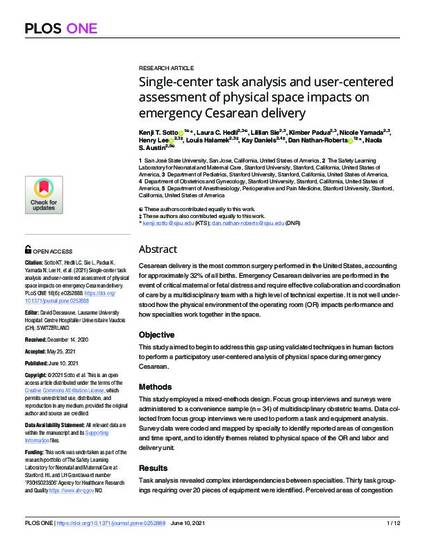
Cesarean delivery is the most common surgery performed in the United States, accounting for approximately 32% of all births. Emergency Cesarean deliveries are performed in the event of critical maternal or fetal distress and require effective collaboration and coordination of care by a multidisciplinary team with a high level of technical expertise. It is not well understood how the physical environment of the operating room (OR) impacts performance and how specialties work together in the space. Objective This study aimed to begin to address this gap using validated techniques in human factors to perform a participatory user-centered analysis of physical space during emergency Cesarean. Methods This study employed a mixed-methods design. Focus group interviews and surveys were administered to a convenience sample (n = 34) of multidisciplinary obstetric teams. Data collected from focus group interviews were used to perform a task and equipment analysis. Survey data were coded and mapped by specialty to identify reported areas of congestion and time spent, and to identify themes related to physical space of the OR and labor and delivery unit. Results Task analysis revealed complex interdependencies between specialties. Thirty task groupings requiring over 20 pieces of equipment were identified. Perceived areas of congestion and areas of time spent in the OR varied by clinical specialty. The following categories emerged as main challenges encountered during an emergency Cesarean: 1) size of physical space and equipment, 2) layout and orientation, and 3) patient transport. Conclusion User insights on physical space and workflow processes during emergency Cesarean section at the institution studied revealed challenges related to getting the patients into the OR expediently and having space to perform tasks without crowding or staff injury. By utilizing human factors techniques, other institutions may build upon our findings to improve safety during emergency situations on labor and delivery.
Available at: http://works.bepress.com/dan_nathan-roberts/24/
